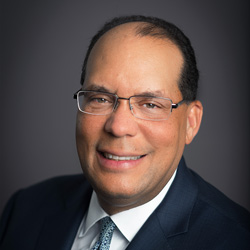Don’t expect hotel owners to stand back and allow hotel brands to cram amenities and services back down their throats. “That game is over,” remarked Thomas Baltimore, CEO of Park Hotels & Resorts, during his company’s fourth-quarter earnings call. Park is a real estate investment trust with a portfolio of 46 properties, which includes 12 resorts, such as the Hilton Hawaiian Village Waikiki Beach Resort and the Waldorf Astoria Orlando.
The hotel industry traditionally has been a top-line approach business: grow revenue; expense be damned. That’s all fine and dandy when the going is good, but the COVID pandemic upended all that harmony: it was the boulder in “Raiders of the Lost Ark” that crushed everything in its path (except Indiana Jones, of course).
Brands, rightfully, pulled back on some of the standards that had been automatic, including daily housekeeping and food and beverage services. Most of these were health-and-safety protocol related. Turns out, as the world began to thaw, several of these past requirements—at least in owners’ minds—were unnecessary, onerous and severely debilitating to the bottom line.
In a plot twist, the brands started to agree.
At the outset of pandemic, Chris Nassetta, the CEO of Hilton, commented that many of these requirements, especially on the labor side, would be stripped out from the P&L. More recently, Marriott International CEO Tony Capuano commented on the stratification of housekeeping. At the luxury level, full daily housekeeping is back, but at Marriott’s lower-tier hotels, rooms either get what Capuano called a “tidying” either every day or every other day.
Other hotel brands have gone to an opt-in approach, whereby upon checkin, guests notify the front desk of the level of housekeeping they require.
“When we make these sort of operating protocol decisions, we are guided by both the evolving expectations of our guests and the economic realities of our owners and franchisees [and] weighing most of those sets of expectations and needs,” Capuano said.

REVENUE v. EXPENSE
Truth is, as revenue dried up, expense warts began to show, drying up the bottom line. The hotel industry is, after all, a margin business that is based on gross operating profit. Hotel companies preach RevPAR, but hotel owners rely on GOPPAR.
Back to Baltimore, who, ironically, started his career as a brand man, holding senior-level positions with Hilton and Marriott. In fact, Park Hotels & Resorts was a lodging REIT spin off from Hilton Worldwide in 2017, along with Hilton Grand Vacations.
When asked by an analyst about talk around “reimagining the operating model,” and bringing back “a little bit more housekeeping and restaurant hours” and other “service-oriented things,” this is what he had to say:
“Every time things start to look better, the brands want to add back more. The pandemic forced all of us to think about the business differently using technology, whether it’s digital key, whether it’s reimagining room service with a knock and drop, which have been widely accepted and appreciated by guests.
“On the Marriott call, the CEO made reference to different levels of housekeeping service and finding the right balance with employees and guest[s].
“You’re going to see permanent changes and what we’ve got to do as an organization and as an industry is to continue to be relentless in figuring out what drives customer satisfaction and intent to return, but also figure out a way to make sure that we’ve got an operating model that makes economic sense.”

The previous remark is similar to what Capuano said: What does the customer want and need and how do you balance that against the returns and income needed by owners to service debt and make the business viable? It’s a fine line: a great customer experience leads to the likelihood of return business and word-of-mouth business.
“None of us want to go back to the days of anemic growth of the top line and no margin growth,” Baltimore continued. “So, I think that these changes are here.”
He did offer that there will be, what he called, “pressure points,” especially as group and business transient demand rebound further. “There’ll be some add-ons from here and there,” he said, “but I think the amenity creep that we’ve seen for generations—that game is over.
“It doesn’t make sense in an environment where we’re going to continue to have cost pressures. We’re going to continue to fight and find efficiencies.”
